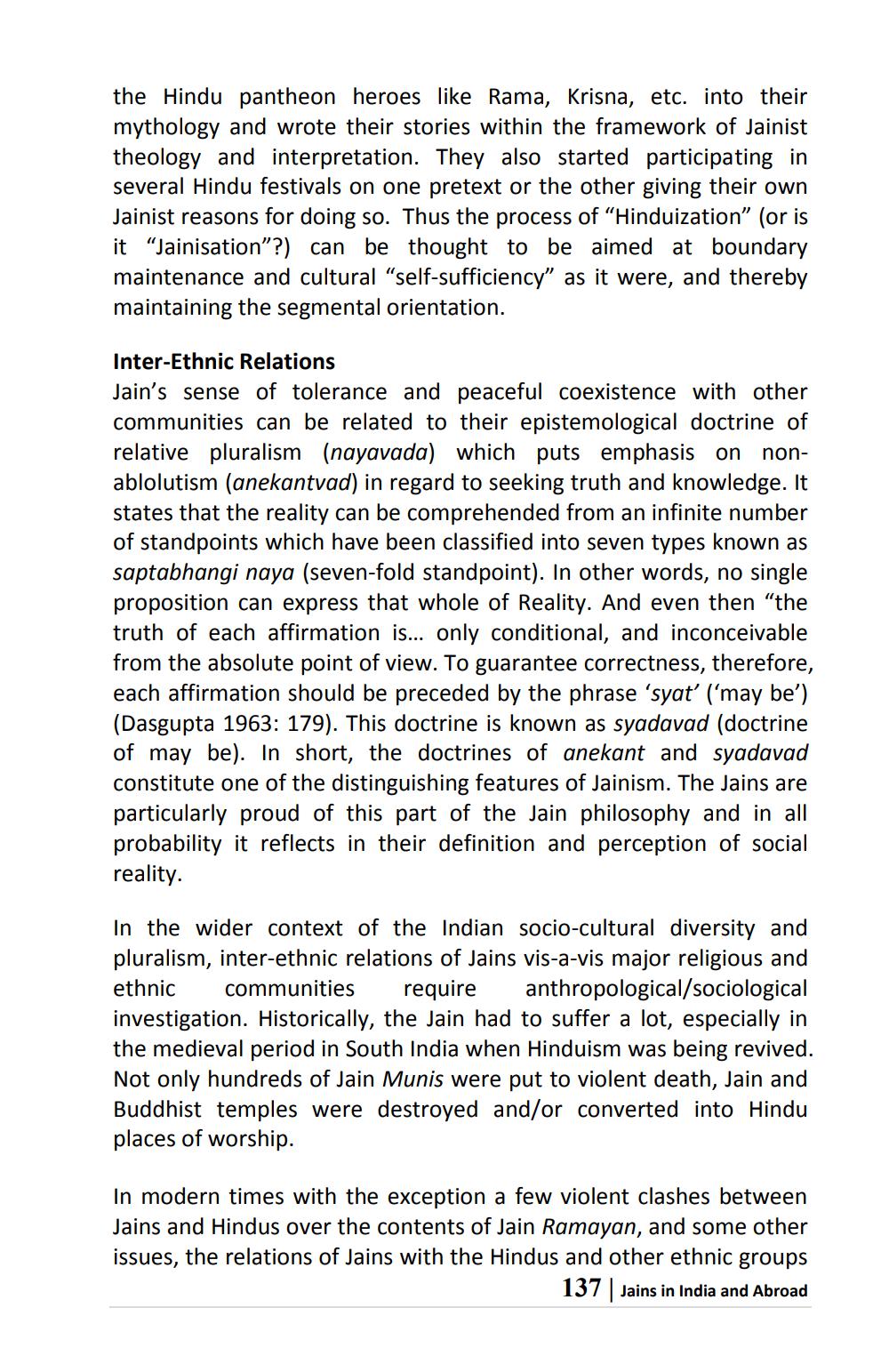________________
the Hindu pantheon heroes like Rama, Krisna, etc. into their mythology and wrote their stories within the framework of Jainist theology and interpretation. They also started participating in several Hindu festivals on one pretext or the other giving their own Jainist reasons for doing so. Thus the process of “Hinduization” (or is it “Jainisation"?) can be thought to be aimed at boundary maintenance and cultural "self-sufficiency" as it were, and thereby maintaining the segmental orientation.
Inter-Ethnic Relations Jain's sense of tolerance and peaceful coexistence with other communities can be related to their epistemological doctrine of relative pluralism (nayavada) which puts emphasis on nonablolutism (anekantvad) in regard to seeking truth and knowledge. It states that the reality can be comprehended from an infinite number of standpoints which have been classified into seven types known as saptabhangi naya (seven-fold standpoint). In other words, no single proposition can express that whole of Reality. And even then "the truth of each affirmation is... only conditional, and inconceivable from the absolute point of view. To guarantee correctness, therefore, each affirmation should be preceded by the phrase 'syat' ('may be') (Dasgupta 1963: 179). This doctrine is known as syadavad (doctrine of may be). In short, the doctrines of anekant and syadavad constitute one of the distinguishing features of Jainism. The Jains are particularly proud of this part of the Jain philosophy and in all probability it reflects in their definition and perception of social reality.
In the wider context of the Indian socio-cultural diversity and pluralism, inter-ethnic relations of Jains vis-a-vis major religious and ethnic communities require anthropological/sociological investigation. Historically, the Jain had to suffer a lot, especially in the medieval period in South India when Hinduism was being revived. Not only hundreds of Jain Munis were put to violent death, Jain and Buddhist temples were destroyed and/or converted into Hindu places of worship.
In modern times with the exception a few violent clashes between Jains and Hindus over the contents of Jain Ramayan, and some other issues, the relations of Jains with the Hindus and other ethnic groups
137 Jains in India and Abroad




